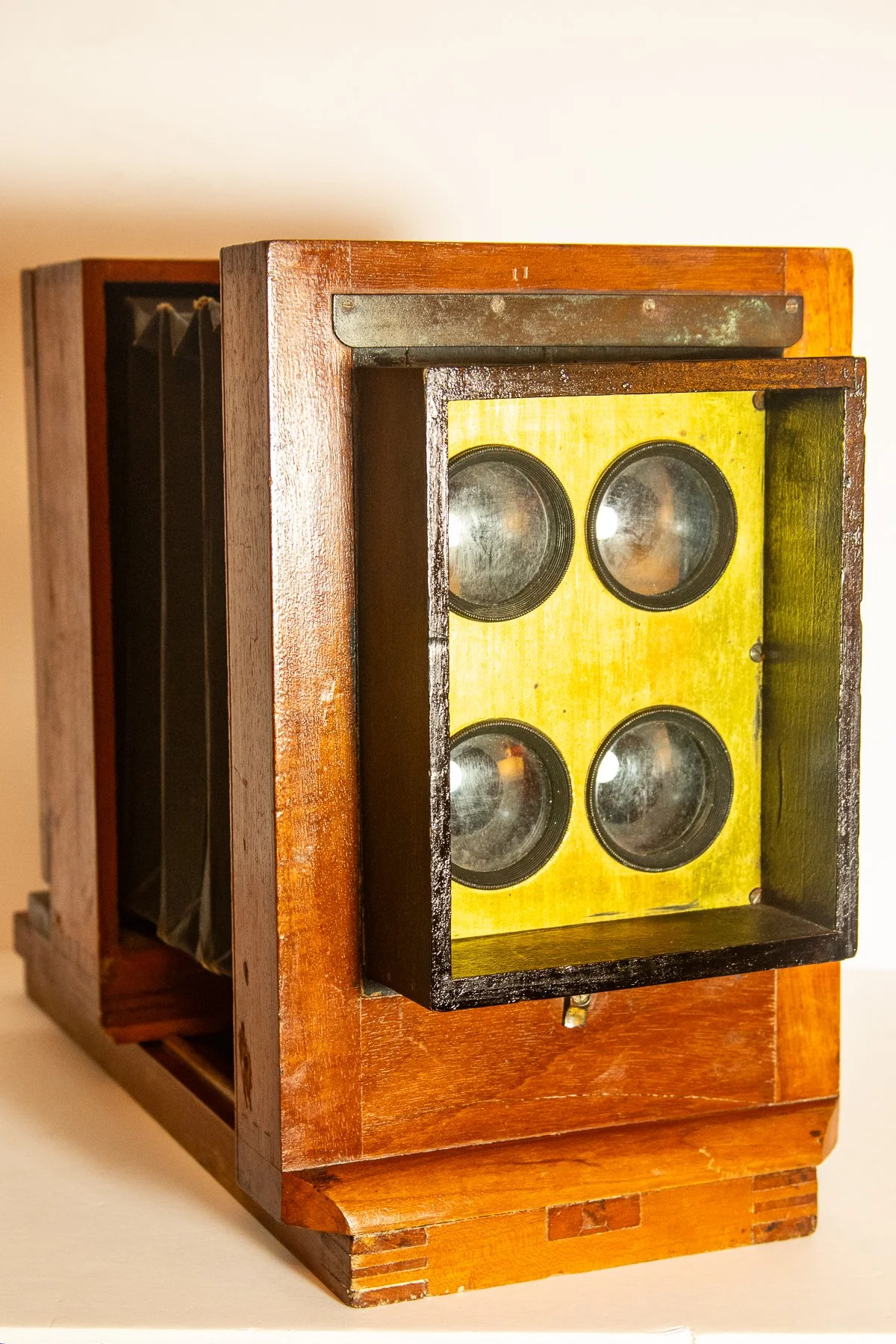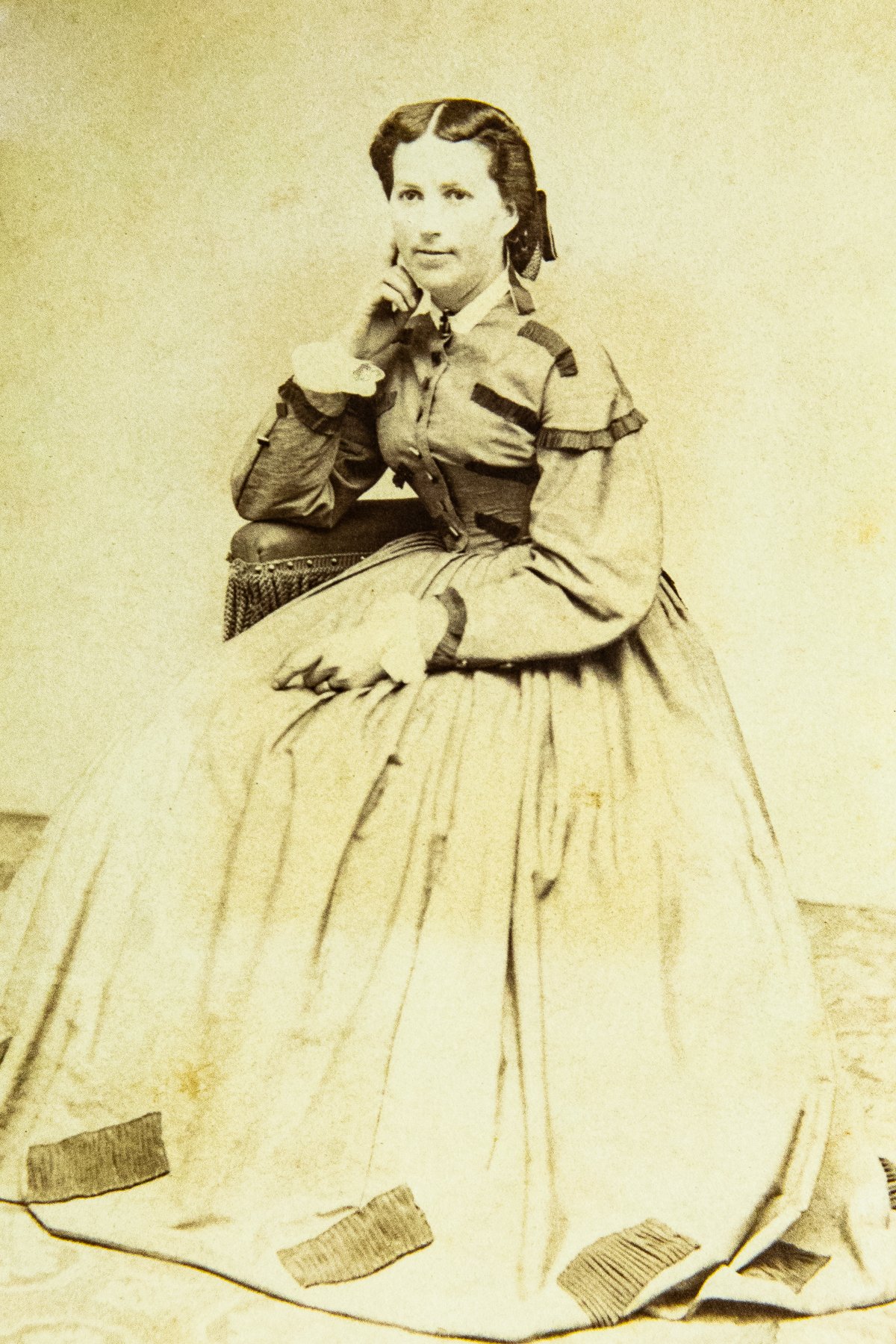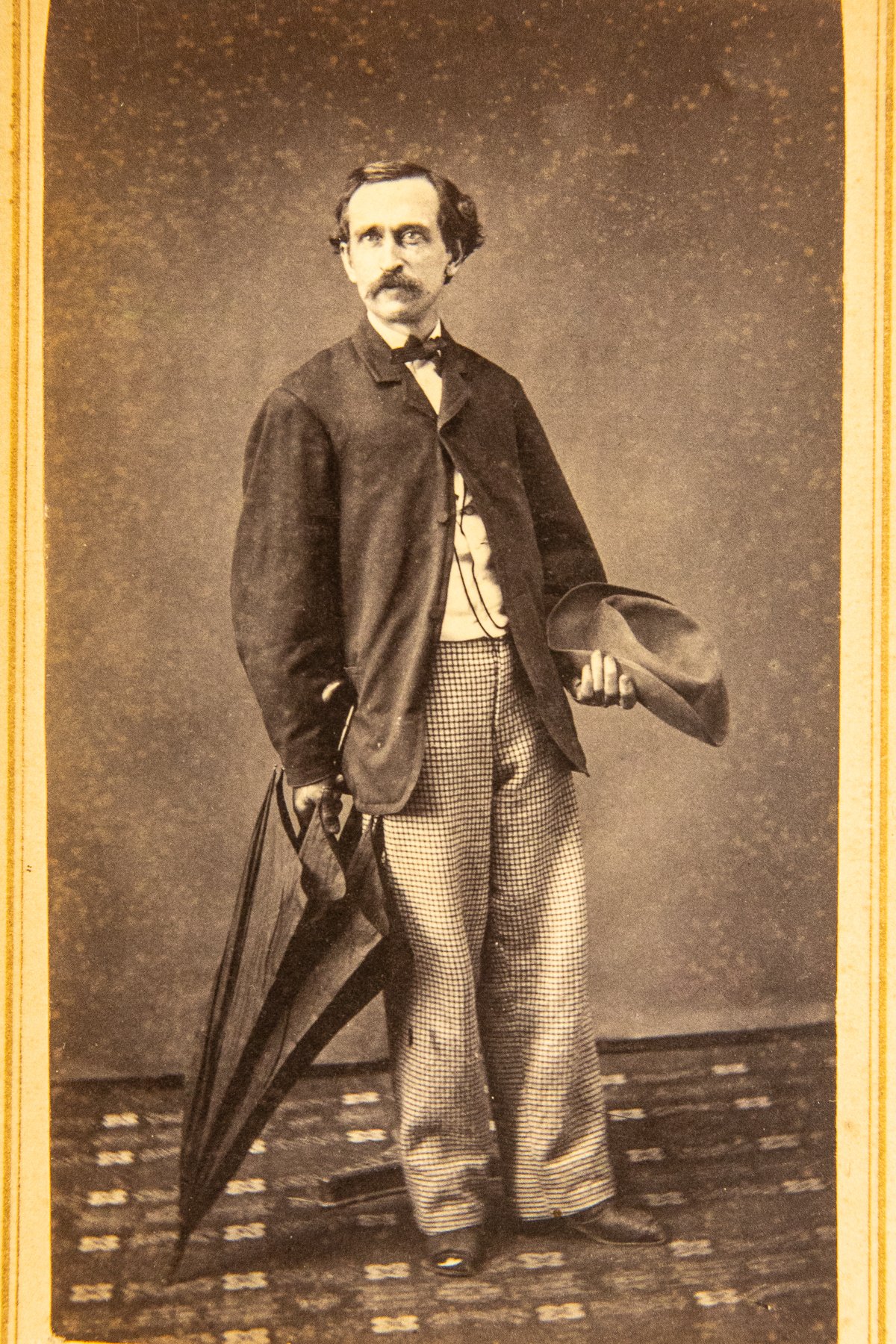Carte de Visite
Ca. 1854 - 1880
Carte de Visite cameras were a type of camera that became popular in the mid-19th century, specifically during the 1860s and 1870s. They were designed to capture small-sized photographs known as cartes de visite, which were essentially calling cards or visiting cards with a person's portrait on them.
These cameras typically used glass plate negatives and employed a relatively simple design. They often had a bellows mechanism that allowed for focusing, and they used lenses with fixed focal lengths. The cameras themselves were usually made of wood or brass, reflecting the materials commonly used during that era.
Carte de Visite photography was significant because it revolutionized portrait photography by making it more accessible to the general public. Prior to this development, portraits were mainly reserved for wealthier individuals due to the time-consuming and expensive nature of early photographic processes.
With carte de visite cameras, photographers could produce multiple copies of a single negative by using albumen prints on thin card stock. These prints would then be mounted onto larger cards measuring around 2.5 x 4 inches (6 x 10 cm). This standardized size made it easy for people to collect and exchange these portraits with friends and family.
The popularity of carte de visite photography eventually declined as newer photographic techniques emerged in the late 19th century. However, these small-format portraits remain an important part of photographic history and are highly sought after by collectors today.












